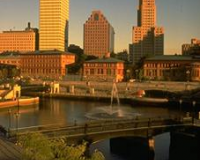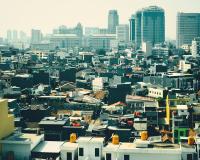
Vibrant Environment
Environmental Justice
All | Biodiversity | Climate Change and Sustainability | Environmental Justice | Governance and Rule of Law | Land Use and Natural Resources | Oceans and Coasts | Pollution Control

For decades, environmental justice advocates have imagined and advanced a vision of environmental governance that protects the most vulnerable communities from harmful pollutants and negative health impacts. Addressing environmental injustice in the diverse contexts of communities around the United States has resulted in a myriad of policy tools and programs for achieving environmental justice at all levels of government. While environmental injustice has global prevalence, environmental injustices are at their core local issues with a local solution space.

As climate change worsens, so does the risk of wildfires. This is especially so in the western United States, as seen all too well in California in recent weeks. Adding fuel to the fire are the increasing number of homes built near areas prone to wildfires, the wildland-urban interface (WUI), which increases the risk to people and their homes, makes wildfires harder to control, and prohibits fires from being allowed to burn naturally.

The Gulf Coast region historically is known for producing more seafood than anywhere else in the continental U.S., both in volume and dollar value. However, since Hurricane Katrina in 2005 and the Deepwater Horizon oil spill in April 2010, fishing communities along the coast who depend upon healthy and vibrant marine habitats have experienced significant financial instability.

It is estimated that over 800 million people will be at risk from the impacts of rising sea levels by 2050, concentrated among 570 coastal cities across the world. Some of these cities have already started to experience the impacts of sea-level rise and storm surges, which has catalyzed efforts by governments and individuals to begin preparing for more projected effects.

First plastic bags, then straws, and now . . . miniature toiletries.
In a world where half the plastic produced globally is packaging we use just once, and only nine percent of all plastic is recycled, a consumer tide against single-use plastics is sweeping up grocery retailers, restaurants, and now the hospitality industry.

Last month, the New York Times reported that the Trump Administration began drafting a new rule that could eviscerate one of the most powerful tools available to U.S. citizens to hold the government accountable for environmental harm. The new rule, if finalized, would prevent concerned citizens from filing cases with the U.S. EPA Environmental Appeals Board (EAB), as well as inherently change EPA’s appeals process and undermine enforcement of environmental law throughout the country.

In the last two weeks, Indonesian islands Sumatra and Borneo began experiencing severe forest fires, evoking fears within the region that the fires could have similar effects to the fires of 2015, which was one of the worst years for transboundary haze in Southeast Asia. Following the 2015 fires, Indonesia took steps to limit the burning and draining of peatland to reduce the outbreak of fires in addition to improving environmental sustainability and air quality in the region. However, due to a combination of governance challenges and climate change-intensifying dry seasons, the country has struggled to keep up with implementing fire mitigating activities in all fire-prone areas.

In recent months, the long-standing environmental justice (EJ) movement—which began with the civil rights movement—has gained new momentum. EJ refers to the “fair treatment and meaningful involvement of all people regardless of race, color, national origin, or income with respect to the development, implementation, and enforcement of environmental laws, regulations, and policies.” As natural disasters ravage minority, low-income communities, global climate justice campaigns demand equitable solutions, and members of Congress underscore the importance of ensuring environmental protection for our most vulnerable communities, EJ principles are given a leading role in the conversation about environmental policy.

Much of the media concerning climate change have direly emphasized that its most horrendous effects will be borne by some of the world’s most impoverished developing cities, with coastal settlements on the front lines of this siege. Yet, most of these headline-grabbing pieces rarely explore the true complexity of these issues beyond mere sea-level rise and a few other similarly visible or tangible environmental problems. This blog aims to briefly outline the deeper extent of crises threatening these cities by further examining an experience of one particular city. A city where the ravages of global warming are more than just dire warnings—but a clear and present burden on its overwhelmingly underprivileged citizens every day. A city that offers perhaps one of the most holistic case studies to examine the entangled causality between environmental and social issues wrought by climate change. My hometown, Karachi, Pakistan.

In honor of the Environmental Law Institute’s 50th Anniversary Year, each month of 2019 highlights a different key theme that represents an important aspect of our work. July is focused on environmental justice, a movement and a concept that encompasses efforts to highlight the disproportionately harmful environmental impacts experienced by vulnerable communities, as well as a commitment to ensuring justice for all people. The growing effort to identify environmental justice concerns and to develop solutions for communities closely aligns with ELI’s mission to make law work for people, places, and the planet, including through our work in the Gulf of Mexico region.